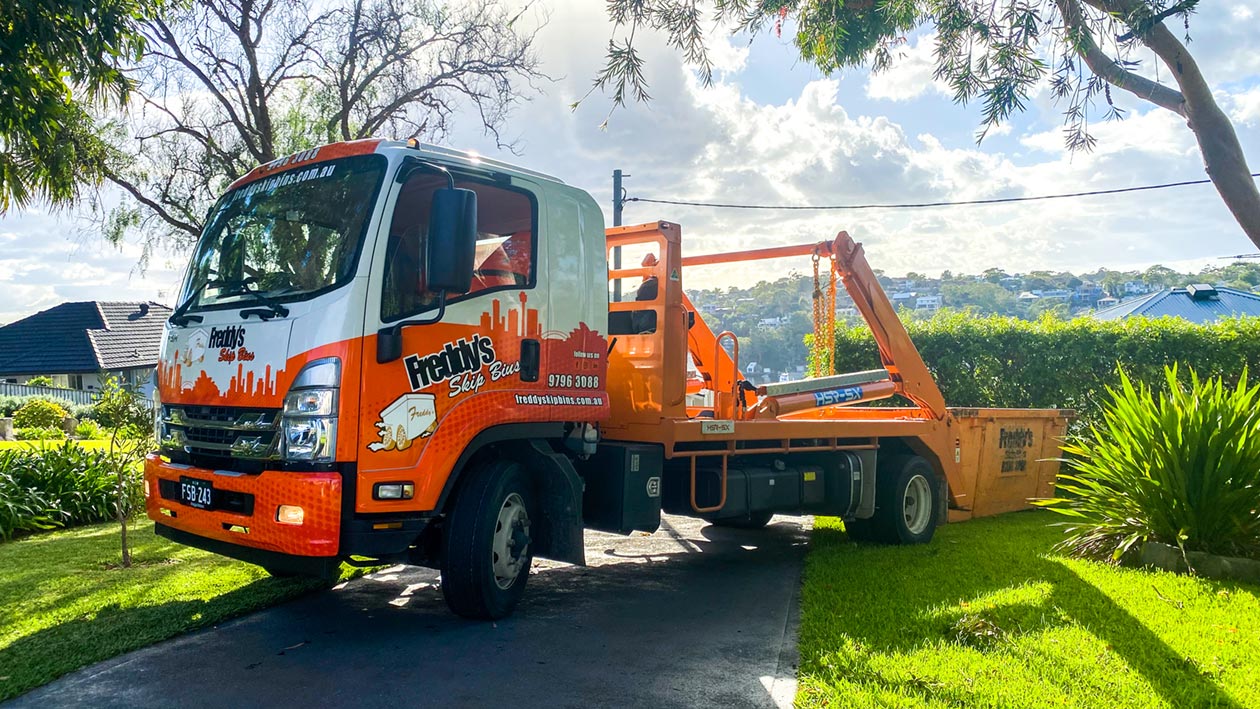Skip Bin Placement: Get It Right the First Time

Placing a skip bin in the wrong spot can lead to fines, delays, or even safety hazards. Read this guide because it provides all the essential information you need for a smooth skip bin hire experience in Australia.
Skip Bin Placement: Rules and Guidelines
Where you can place your skip bin depends heavily on if it’s on your property or public land. Here’s a breakdown:
On Your Private Property
- Most of the time, you won’t need a permit to place a skip bin on your own property (e.g., driveway, front lawn).
- Always ensure the bin sits on a stable surface and remains accessible for collection.
- Even though you don’t need a permit for private property placement, be mindful of neighbours and avoid obstructing the sidewalk or road.
- Check with your skip bin company for any unique requirements they might have.
On Public Land (Nature Strip, Road)
- Regulations are stricter for public property due to safety and traffic concerns.
- A permit from your local council is often necessary.
- Freddy’s Skip Bins is a great choice because we are authorised to deliver bins on council property with pre-arranged permits. We handle permits for the following councils:
- Inner West Council – obtaining a permit number is necessary for your booking, but you won’t incur any additional fees for up to 7 days.
- Randwick Council
- Burwood Council
- Woollahra Council
- Besides placing your skip bin on council property, you might also need a permit if:
- You need the bin for a longer period than your council typically allows.
- Your area has special restrictions about skip bin placement.
Applying for a Permit:
- Contact your local council directly. Their website should provide forms and instructions for the application process.
- Allow time for your permit to be processed before your planned skip bin arrival.
Choosing the Ideal Location for Your Skip Bin (and Site Preparation)
The right location and a bit of prep work will make your skip bin experience easier. Consider the following:
- Accessibility: The skip bin delivery truck needs space to maneuver for drop-off and pick-up. Driveways are often a good choice.
- Proximity: Locate the bin as close to your work area as possible to reduce time spent carrying debris.
- Disruptions: Ensure the bin won’t block driveways long-term, create obstacles for pedestrians, or pose safety risks.
- Hazards: Look for overhead hazards like powerlines or branches, and avoid placing the bin near anything easily damaged (drains, landscaping).
Site Preparation
- Protect Surfaces: Place boards or a tarp under the bin if you’re concerned about potential scratches or marks on your driveway or lawn.
- Clear Obstacles: Remove any parked cars, debris, or low-hanging branches that might interfere with delivery or pickup.
Tip: Unsure about the best spot? Snap some pictures of the potential location and share them with your skip bin company – they can offer expert advice!
Efficiently Filling Your Skip Bin: Maximizing Space
When you hire a skip bin for residential waste management, your primary goal is to dispose of unwanted materials effectively while saving on costs. Filling your skip bin efficiently plays a pivotal role in achieving this balance. Here are essential tips from our how to load your skip bin correctly guide which will help you with organising and loading your bin to make the most out of its volume:
- Sort before you throw: Separate your waste into categories like construction debris, garden waste, and recyclables. This step simplifies loading and can help with recycling later.
- Load heavy items first: Place bulky and heavy items at the bottom of the skip bin to create a stable base and prevent lighter items from being crushed.
- Dismantle large objects: If possible, break down large items such as furniture and branches to reduce air pockets and fit more into the bin.
- Fill gaps with smaller waste: As you load your heavier items, backfill the spaces with smaller debris. This approach helps in distributing weight evenly and maximizes space.
- Flatten boxes and similar materials: Cardboard and other flat materials should be broken down and laid flat to prevent them from taking up unnecessary space.
Being strategic about filling your skip bin isn’t just about being cunning with space; it’s also about economics. Efficient bin filling can significantly impact cost savings. Overfilled bins may incur extra fees, and underutilized space is a waste of potential, meaning you might end up hiring an additional bin. By loading your skip bin methodically, you ensure that you’re using the entire volume you’ve paid for, avoiding additional charges and reducing the number of bins needed for your waste disposal.
Ensuring Safety Around Your Skip Bin
When it comes to managing waste with skip bins, safety is paramount. Not only does secure placement protect you and your family, but it also ensures the well-being of passersby and the local community. Let’s explore critical safety considerations and strategies to avoid accidents.
Safety Considerations for Skip Bin Placement and Use
Deciding where to place your skip bin is the first step to preventing potential hazards. A location away from high traffic areas reduces the risk of accidents. It’s essential to place the skip bin on a flat, hard surface to prevent tipping. Moreover, the area should be well-lit if the skip bin is to be accessed during evening hours, to enhance visibility and safety.
- Visibility: Make sure the skip bin is visible to all, especially to vehicle operators. Using cones, reflective markers, or signage can alert others to the bin’s presence, especially at night.
- Accessibility: Keep the area around the skip bin clear of obstructions, ensuring easy and safe access for anyone who needs to use it.
- Load Distribution: Evenly distribute waste inside the skip bin to prevent imbalances that could lead to tipping or spillage.
- Prohibited Items: Never place hazardous or flammable materials in your skip bin, as these pose a serious safety risk.
- Fill Level: Always fill the bin to the appropriate level, avoiding overflow, which can lead to both injury and environmental pollution.
By following these tips, you can ensure that your skip bin area is safe and free from potential hazards. Remember that safe skip bin placement and use are integral to maintaining a secure environment for everyone in the vicinity.
End of Hire Period
Pickup Planning
Coordinate the pickup date and time with your skip bin provider when making the initial booking. Ensure the bin is accessible and ready for collection.
Hire Extension
If you find you need more time, contact your skip bin company as soon as possible. Often, extensions can be arranged, but availability and fees may vary.
Post-Removal Cleanup
Once the bin is gone, do a quick sweep of the area. Remove any debris that might have fallen around the bin during filling or removal.
Need Help?
Freddy’s Skip Bins can help you navigate permit requirements, ensuring you have everything in order for a seamless skip bin hire experience.
We are proud to support:











